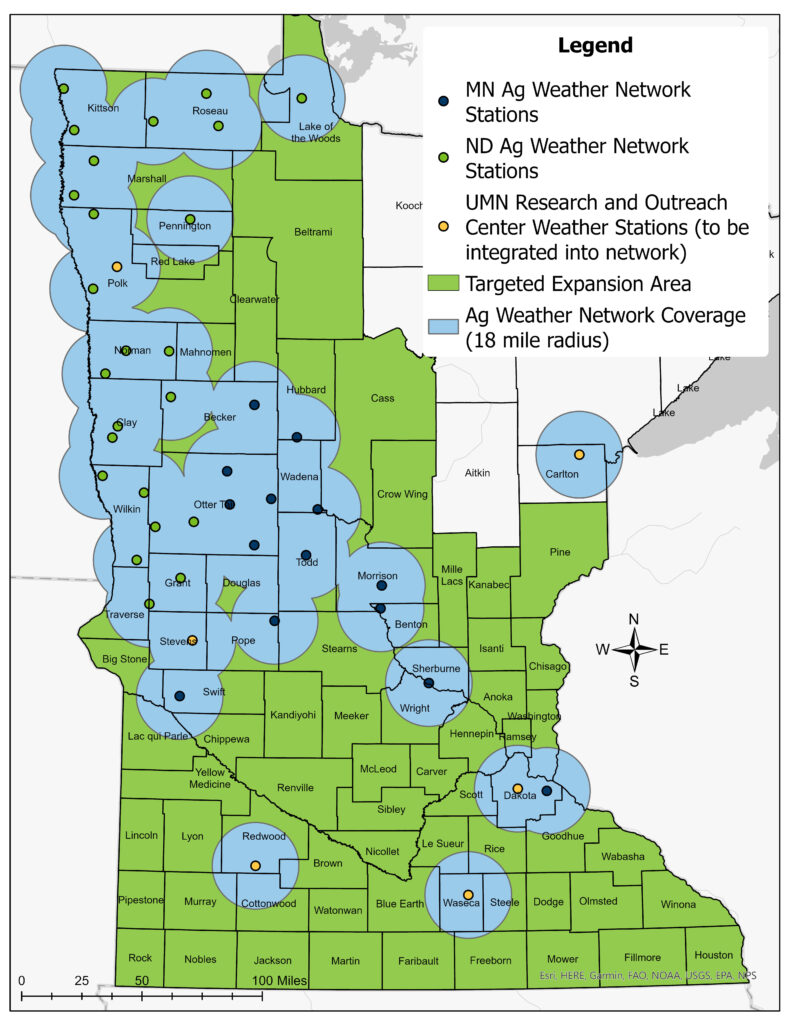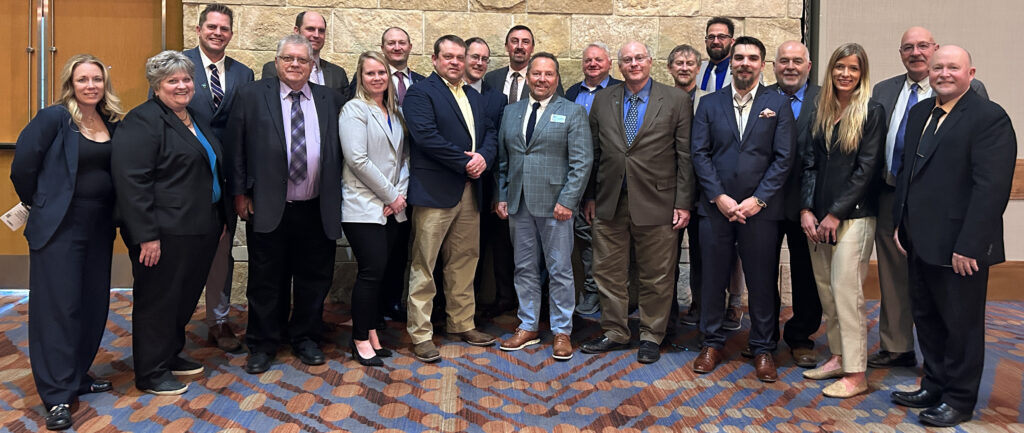Farmers talk about the weather – a lot.
Soon, Minnesota farmers will have even more reasons to talk about Mother Nature’s latest happenings. In 2023, the Clean Water Fund granted $3 million to the Minnesota Department of Agriculture (MDA) to expand the Minnesota Ag Weather Network (MAWN) to agricultural areas across the state, which will use North Dakota Agricultural Weather Network (NDAWN) programming and infrastructure. The initial expansion of about 40 additional weather stations will occur in cooperation with several partners over the next two to three years. The Minnesota Soybean Growers Association supports NDAWN’s expansion into Minnesota.
“MAWN will be on our maps and there will be a programmer hired that’s going to focus on Minnesota tools and updates because the regulations are a little bit different for every state,” NDAWN Director Daryl Ritchison said. “When you’re new at something, it takes time to figure things out. So, this first season might be a little bit slow.”
NDAWN was established in 1989 by John Enz in cooperation with the High Plains Climate Center and was specifically designed to provide weather data required for the development of and operational use of agricultural models. Its mission is to monitor and record local weather conditions throughout North Dakota and the Red River Valley, and disseminate these timely, detailed, accurate data and information through a comprehensive array of applications, summaries and innovative displays, free to all on the NDAWN website.
“In a sentence, NDAWN is a weather risk management tool,” Ritchison said. “It can help decide when it’d be the opportune time to spray for a certain disease. If it looks like it’s going to be a big problem four or five days from now, you can get a head start with fungicide applications and we can also predict when certain insects are going to emerge.”
NDAWN and MAWN stations collect an exhaustive list of weather data, including:
- Total rainfall
- Air temperature (max/min)
- Wind direction
- Wind speed
- Peak gust
- Relative humidity
- Dew point temperature
- Four-inch bare soil temperature
- Solar radiation
Other available information includes daily estimated crop water use, various disease risk, irrigation scheduling recommendation, growing degree days and more.
Currently, Minnesota is home to 38 weather stations throughout the central and northwestern part of the state. Eventually, MDA plans to increase that number to roughly 100 weather stations across Minnesota’s agricultural areas. This expansion will provide Minnesota producers with tools to guide decisions for effectively managing nutrient inputs and water usage, appropriately time chemical application and reduce leaching and runoff.

“The Minnesota Soybean Research & Promotion Council (MSR&PC) is all about increasing profitability for Minnesota soybean producers,” MSR&PC Chair Tom Frisch said, “and having access to the MAWN and NDAWN network will be a game-changer for growers, not to mention an opportunity to dial-in on management decisions.”
To help bring this vision to life, MDA is looking for volunteers across the state who are willing to host weather stations. Weather station hosts and cooperators will be partners of the weather network and will report visual damage or problems to MDA, carry out minor maintenance tasks such as clearing snow off the solar panel and act as a point of contact for the MDA if a malfunction occurs on the weather station. For more information regarding hosting a weather station, visit https://www.mda.state.mn.us/weather-station-host.
“We’re trying to get a weather station every 15 to 20 miles in the agricultural areas of the state,” Ritchison said. “We’re looking for volunteers to host a station – you wouldn’t get paid but it’s only a 10 by 10 square yard area and then you’d have a station on your property, which is always cool.”
Projects of this scale take time, but Minnesota farmers will soon reap the benefits of a comprehensive ag weather network system.
“I think that by the end of 2027, Minnesota is going to have just an incredibly good agricultural weather network for producers in the state,” Ritchison said.
For more information about MAWN, visit https://www.mda.state.mn.us/minnesota-ag-weather-network.





